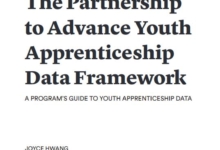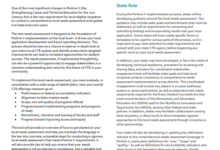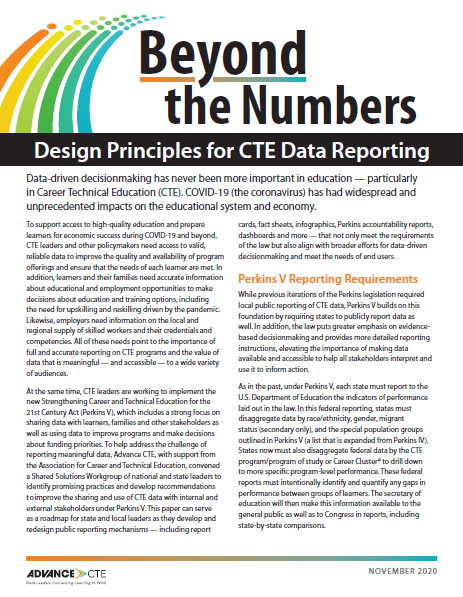The Strengthening Career and Technical Education for the 21st Century Act (Perkins V) pushes states to improve the public accessibility of Career Technical Education (CTE) data. According to the law, state agencies, as well as local recipients, must share data on the performance of all CTE students, and subgroups of learners, and make this information available widely and through a variety of user-friendly formats.
In March 2020, Advance CTE and the Association for Career and Technical Education (ACTE) convened a Shared Solutions Workgroup of state and national experts to explore strategies for effective CTE data reporting and communication. Over a series of meetings, the workgroup co-designed a set of tools and resources to help states improve their CTE data reporting.
This report provides nine principles for developing effective and accessible CTE data reporting tools:
- Clarify the purposes for sharing data
- Make data easy to find
- Make data visually appealing
- Clearly and consistently label and describe data
- Make data accessible
- Disaggregate data to highlight equity
- Provide context to add meaning
- Enable interactivity and customization for key audiences
- Help users interpret data and take action
State and local leaders can use these design principles as a blueprint to inform the early design and development of CTE data reporting tools or as a checklist to ensure their final reports align with best practices for access and usability.
Check out the companion resource Beyond the Numbers: A Toolkit for Communicating CTE Data, for guidance, best practices and customizable tools to create communications that help stakeholders better understand and act on CTE data.







